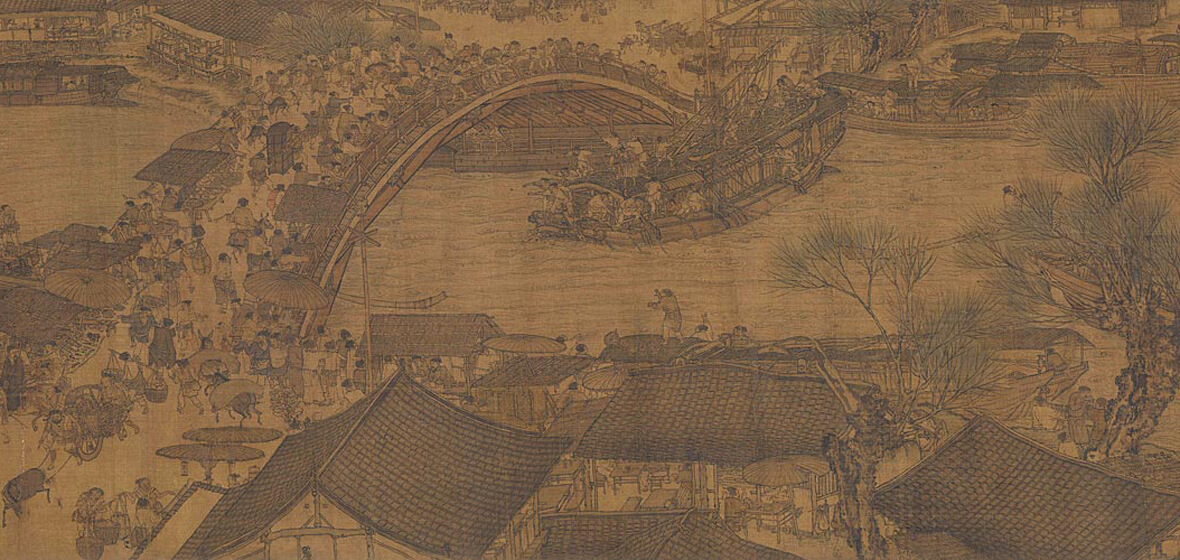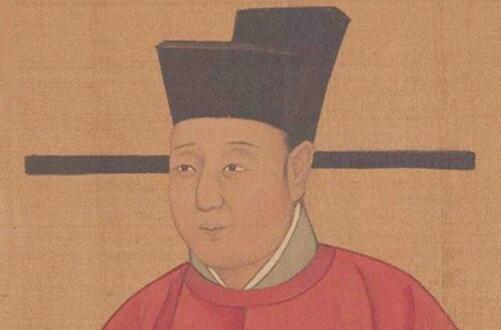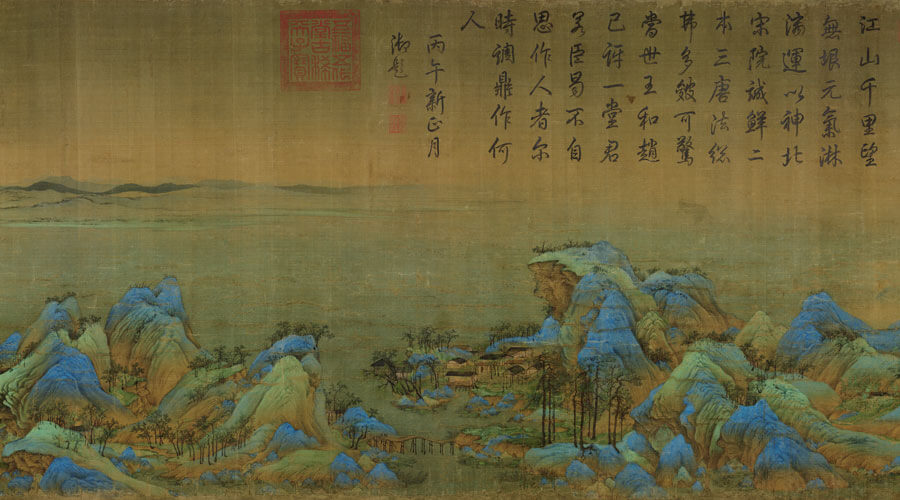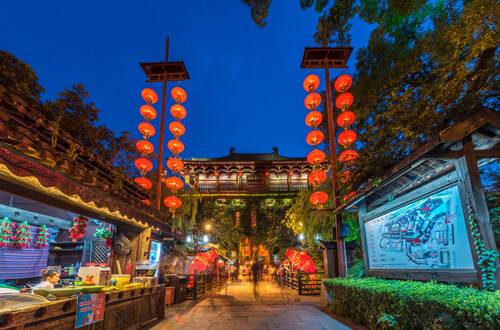The Greatest Dynasties in China: Song Dynasty

When the Tang dynasty (618–907 CE) collapsed, a period of upheaval, a rapid succession of dynasties, and multiple kingdoms followed. In the mid-tenth century, a general named Zhao Kuangyin reunified China, establishing the Song dynasty (960–1279 CE) with himself as the first ruler, Emperor Taizu.
The Song Dynasty was a time of significant cultural, economic, and technological advancements in China. It saw the development of movable type printing, gunpowder, and the compass, which had a significant impact on the world. The Song Dynasty also saw the growth of the economy, with advancements in agriculture, trade, and industry.
The Song Dynasty was ruled by a centralized government with a well-organized bureaucracy. It was a time of relative political stability, which allowed for the growth of culture and technology. The Song Dynasty also saw significant achievements in literature, poetry, painting, and calligraphy.
The Facts of the Song Dynasty

- Duration: The Song dynasty was split into two distinct periods: Northern Song (960–1125) located in the present-day area known as Kaifeng, and Southern Song (1125–1279) in the present-day area known as Hangzhou.
-
Capital City:
Bianliang (Kaifeng) for Northern Song (960-1125 CE)
Lin’an (Hangzhou) for Southern Song (1125-1279 CE) (1421-1644) - Population: about 100 million
- Area: about 2,800,000 square kilometers (1,081,086 square miles)
The Famous Emperors of the Song Dynasty
Emperor Taizu

Personal name Zhao Kuangyin. Before becoming emperor, he was a general during the Later Zhou Dynasty and played a significant role in the reunification of China. Emperor Taizu came to power in 960 CE after leading a military coup against the Later Zhou Dynasty. He established the Song Dynasty and became its first emperor. During his reign, he implemented significant reforms, including the creation of a centralized government and the establishment of a well-organized bureaucracy. He also implemented land reforms that helped to increase agricultural productivity and improve the lives of peasants. Emperor Taizu was known for his military prowess and his ability to unite the different regions of China under his rule. He was also known for his benevolent rule and his efforts to promote education and culture. He established the Imperial Academy, which became a center for learning and scholarship during the Song Dynasty.
Emperor Taizong
Also known as Zhao Guangyi, was the second emperor of the Song Dynasty in China. He was born in 939 CE and ruled from 976 CE until his death in 997 CE. He was the son of Emperor Taizu, the founder of the Song Dynasty. Emperor Taizong came to power after the death of his brother Taizu and continued his policies of reform and centralization. He strengthened the centralized government and reorganized the bureaucracy, which helped to improve the efficiency of the government. He also implemented land reforms that helped to increase agricultural productivity and improve the lives of peasants.
Emperor Taizong was known for his military campaigns against the Northern Han and the Khitan Liao Dynasty. He was a skilled military strategist and was able to expand the territory of the Song Dynasty. He also promoted education and culture, establishing the Imperial Academy, and supporting the work of scholars and artists. Emperor Taizong was a patron of Buddhism and supported the construction of temples and monasteries throughout the empire. He was also known for his benevolent rule and his efforts to promote the welfare of his people.
Emperor Huizong
Personal name Zhao Ji, was the eighth emperor of the Song Dynasty in China. He was born in 1082 CE and reigned from 1100 to 1125 CE during the Northern Song period. Emperor Huizong was known for his love of the arts, particularly painting and calligraphy. He was a skilled artist himself and was known for his patronage of the arts. He established the Imperial Painting Academy, which became a center for artistic innovation and experimentation during the Song Dynasty.
Despite his love of the arts, Emperor Huizong's reign was marked by political instability and military conflict. He faced several rebellions and invasions during his reign, including the Jurchen invasion that led to the fall of the Northern Song Dynasty. Emperor Huizong was captured by the Jurchen and spent the rest of his life in captivity.
Emperor Gaozong

Also known as Zhao Gou, son of emperor Huizong, was the ninth emperor of the Song Dynasty in China. He was born in 1107 CE and ruled from 1127 CE until his death in 1162 CE. He was the first emperor of the Southern Song period, which began after the fall of the Northern Song Dynasty to the Jurchen Jin Dynasty.
Emperor Gaozong came to power at a young age after his father, Emperor Huizong, abdicated the throne in his favor. He faced significant challenges during his reign, including the ongoing conflict with the Jin Dynasty and the need to relocate the capital from Kaifeng to Hangzhou. Despite these challenges, Emperor Gaozong was able to maintain the stability of the Song Dynasty and implement significant reforms. He reorganized the government and established a new legal code that helped to improve the lives of the people. He also promoted education and culture, establishing the Imperial Academy, and supporting the work of scholars and artists.
Emperor Gaozong was known for his benevolent rule and his efforts to promote the welfare of his people. He was also a patron of Buddhism and supported the construction of temples and monasteries throughout the empire. His reforms and policies helped to maintain the stability of the empire and promote the growth of culture and education.
What is the Song Dynasty Known for?
Printing, paper money, porcelain, tea, restaurants, gunpowder, the compass – the number of things that Chinese of the Song Dynasty gave to the world is mind-boggling. This vibrant period in Chinese history was marked by economic prosperity and remarkable technological innovation. The innovations developed during the song dynasty had a lasting impact not only on China but also on the entire world.
Technological Advancements
The Song Dynasty marked significant technological advancements in China, particularly in the areas of agriculture, mechanical engineering, printing, and shipbuilding. One of the most significant innovations was the introduction of gunpowder, which revolutionized warfare and shaped battlefield tactics for centuries to come.

- The movable type printing was invented during the Song Dynasty reign by artisan Bi Sheng (990–1051). Movable type, alongside woodblock printing, allowed mass production of books which could be sold at affordable prices. This led to an expansion in the educated class in China as parents encouraged their children to read and write to succeed in the imperial examination. The printing technology used during the Song Dynasty was of high quality, with clear and precise characters. This made books easier to read and more aesthetically pleasing. That is why Song Dynasty books were highly prized by collectors in China.
- Ceramics made in the Song dynasty stand out as world masterpieces. Song ceramics were supremely accomplished in terms of technical expertise, creativity, and the aesthetic harmony between the shape and glaze of a vessel.
- Cannons were invented around 1127. The Song also used gunpowder to make fire lances – actually flame throwers – and many other gunpowder weapons, such as anti-personnel mines, which are thankfully now being taken out of general use.
- A new type of rice was introduced from Champa, a kingdom then located near the Mekong River Delta in what is now Vietnam. It was a high-yield variety that grows faster. It prevented famine and allowed people to grow a double crop of rice each year in some areas in China, giving them a surplus that they could sell on the open market.
- The Song Dynasty saw the development of new agricultural tools, including iron plows and sickles. These tools were more efficient than previous tools and helped to increase agricultural productivity.
Economic Prosperity
During the Song Dynasty, China achieved unprecedented economic growth, fueled by the development of a merchant class and the growth of urban industry and commerce.
- The world’s first governmental paper money was issued in the 1120s.
- The Song Dynasty saw the growth of cities and urbanization. This led to the development of a merchant class and the growth of commerce and trade.
- The Song Dynasty established trade relations with some 50 countries in the world.
Literature and Art
The Song Dynasty was a time of tremendous literary and artistic output, with new styles and forms emerging in both poetry and the visual arts. Many masterpieces of landscape painting were created, representing the unique and exquisite beauty of the Chinese countryside and Jiangnan regions (“South of the River” or Suzhou, Hangzhou, Nanjing, Wuxi, and Shanghai).
- The literary forms such as the ci-style poetry and the novel were flourishing.
- The Song court established an Imperial Painting Academy in the palace. Painters from all over the country were recruited to serve the needs of the court.
- It was in the Song Dynasty that tea reached its cult status. It was drunk out of very beautiful, extraordinarily exquisite tea bowls made from porcelain, one of the glories of the Song Dynasty.

Religion
Religion played an important role in the Song dynasty. There was no one set religion. Rather, several different religions rose and fell over time, and influenced each other. Many of these religions are still practiced today. Taoism, Buddhism, and a new form of Confucianism known as Neo-Confucianism all enjoyed prominence during the Song dynasty.
Political Changes
During the Song Dynasty, great efforts were put into perfecting the civil service examinations as a tool for discovering the most qualified candidates, ensuring that officials were chosen based on their abilities and accomplishments, rather than solely by birthright. These efforts opened up greater opportunities for social mobility and helped to re-engage the gentry class in public service.
Where Can I See the Influence of the Song Dynasty Today?
Although the Song Dynasty ended nearly 800 years ago, its influence on Chinese culture, art, and technology can still be found in various aspects of modern Chinese life.
As a visitor, you can go to Kaifeng and Hangzhou to visit relics that were built during the Song Dynasty. In Kaifeng, you can visit Iron Pagoda which was built during the Northern Song Dynasty. You can also visit the Millennium City Park. The park is a recreation of the famous painting "Along the River During the Qingming Festival," which was created during the Song Dynasty. The park showcases the daily life of Song people.
In Hangzhou, you can visit the following places
The Six Harmonies Pagoda: a Buddhist pagoda that was built during the Northern Song Dynasty and rebuilt during the Southern Song Dynasty. It is a testament to the engineering and construction skills of the Song Dynasty.
Southern Song Imperial Street: a pedestrian street in Hangzhou that was once the main street of the Southern Song imperial palace. It features traditional architecture and shops selling souvenirs and local specialties.

Song Dynasty Town: a theme park in Hangzhou that is designed to look like a town from the Song Dynasty. It features traditional architecture, shops selling Song Dynasty-style goods, and performances of traditional Song Dynasty music and dance.
The Southern Song Dynasty Guan Kiln Museum: dedicated to the history and art of the Guan Kiln, one of the most famous kilns of the Song Dynasty. The museum is located on the site of the original Guan Kiln, which was in operation during the Southern Song Dynasty.

OR
Are you eager to begin your Chinese cultural journey?
Drop us a line and we will promptly connect you with our leading China expert!